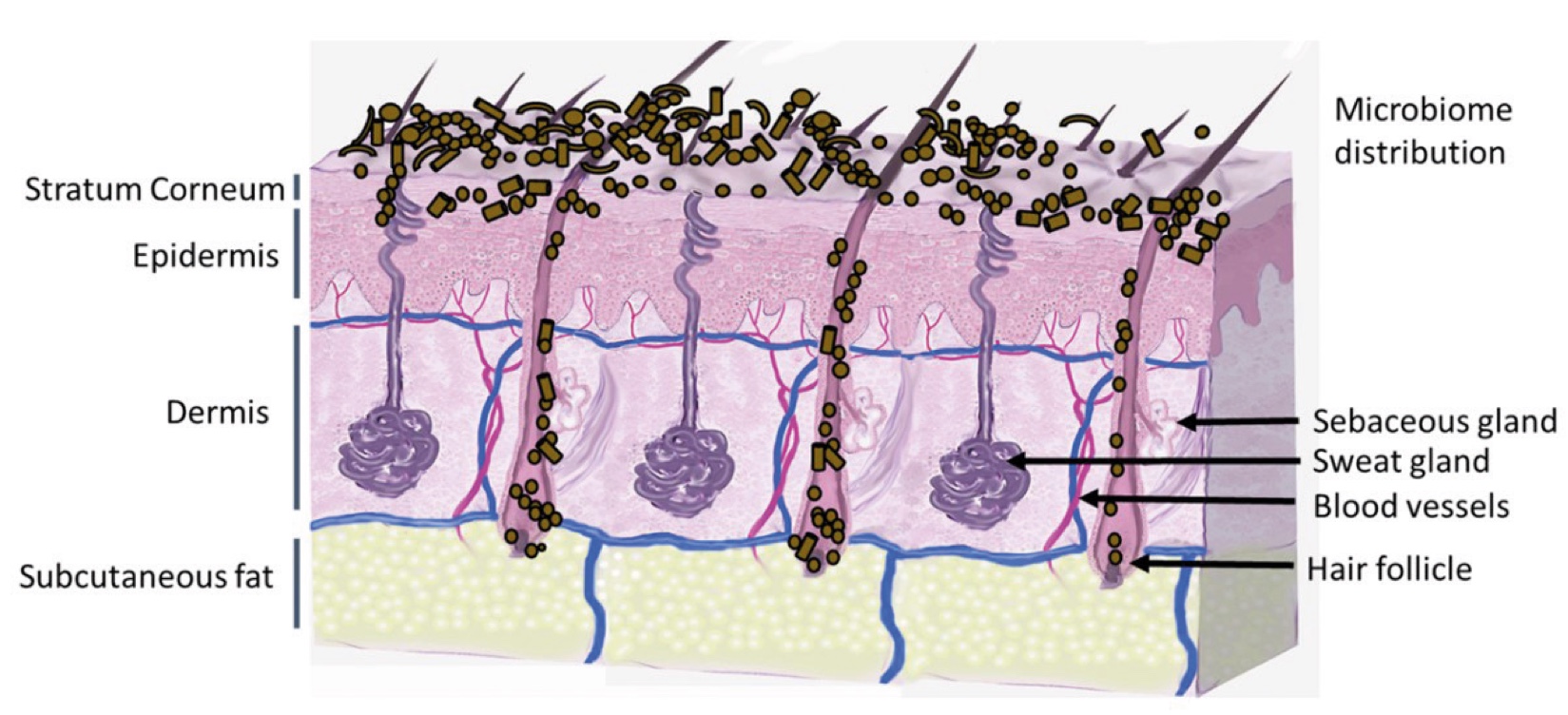What trends in testing for beauty
ANNE CHARPENTIER
CEO, Skinobs
ABSTRACT: The provided text discusses trends in beauty testing and the evolving landscape of the industry. The article covers various aspects of beauty testing, including recent trends observed at scientific events, insights from discussions with experts globally, and the focus areas of testing conferences. The text delves into specific trends for 2024, such as microbiome testing, holistic beauty, age inclusivity, "clean beauty," hair "skinification," and the impact of technology on testing studies. Key topics include advancements in microbiota testing, the role of the microbiota in skin-brain-gut connection, inclusive product testing, "clean beauty" product analysis, and technological advancements in testing protocols. The article emphasizes the importance of innovation, ethical testing practices, and comprehensive approaches in the beauty industry.
Introduction
Since the 1990s, testing services dedicated to the beauty market have been at the forefront of product development, starting from the very inception of R&D projects, through formulation, regulatory affairs, and ultimately, scientific communication regarding the safety and performance of active ingredients or finished products. A multitude of factors drive the evolution of the testing field, including technological advancements, consumer trends, regulation, and environmental considerations. Today, we will concentrate on the most trends recently observed at the latest and scientific events and shows, as well as insights gathered from discussions with consultants, testing platform users or evaluation managers from around the world.
Keynote lectures at the IFSCC congress stood out for their innovative focus on emotional transformation, sensory inclusion, holistic beauty, and age reversal, sparking a reevaluation of beauty science and its intricate connection with nature.
In the testing conference domain, a significant portion of the 53 conferences centered on evaluating actives of finished products—29 of them focused on clinical testing, while 22 addressed preclinical testing. Aging and regeneration dominated discussions with 15 claims, followed by 7 on acne, sebum, lipids, and sweat, and 6 on well-being, emotions, or perceptions. Skincare took precedence with 39 conferences, in contrast to haircare's 8.
In the realm of posters, 120 were dedicated to evaluating actives of finished products—78 emphasizing clinical testing and 38 focusing on preclinical testing. Dominant topics included skin models (12), artificial intelligence (11), and ethnicities (15). Skincare evaluation remained a significant focus, with 48 posters dedicated to this area, while haircare testing had 8. This scientific event collectively propelled advancements in beauty science and ethical testing practices, heralding an era of innovative and inclusive approaches in the beauty industry. It has drawn the main directions for future testing and at the same time brought to light the weak signs of topics of interest for new cosmetics and actives development.
“
“A study in healthy women providing probiotic yogurt for four weeks showed an improvement in emotional responses as measured by brain scans”

Figure 1. Skin Section with Microbiome. Most microorganisms live in the superficial layers of the stratum corneum and in the upper parts of the hair follicles. Some reside in the deeper areas of the hair follicles and are beyond the reach of ordinary disinfection procedures. There bacteria are a reservoir for recolonization after the surface bacteria are removed.
Materials and methods
Studies of major depressive disorder have been correlated with reduced Lactobacillus and Bifidobacteria and symptom severity has been correlated to changes in Firmicutes, Actinobacteria, and Bacteriodes. Gut microbiota that contain more butyrate producers have been correlated with improved quality of life (1).
A study in healthy women providing probiotic yogurt for four weeks showed an improvement in emotional responses as measured by brain scans (2). A subsequent study by Mohammadi et al. (3) investigated the impacts of probiotic yogurt and probiotic capsules over 6 weeks and found a significant improvement in depression-anxiety-stress scores in subjects taking the specific strains of probiotics contained in the yogurt or capsules. Other studies with probiotics have indicated improvements in depression scores, anxiety, postpartum depression and mood rating in an elderly population (4-7).
Other studies have indicated a benefit of probiotic supplementation in alleviating symptoms of stress. In particular, researchers have looked at stress in students as they prepared for exams, while also evaluating other health indicators such as flu and cold symptoms (1). In healthy people, there is an indication that probiotic supplementation may help to maintain memory function under conditions of acute stress.
What are the testing trends for 2024 For claims consideration
Microbiome, more than friendly!
The claim on microbiota testing, prevalent in North America and Europe, persists with expanding knowledge. Microbiota tests are gaining precision, but counting bacterial strains is just the initial screening step. Relying solely on this count for an in-situ microbiome effect is challenging. A study, "Redefining the Skin Type," presented by Dr. Elsa Jungman, HelloBiome, categorizes skin types based on the microbiome. The research focused on bacteria and fungi, revealing distinct compositions in various skin types, and emphasizing Cutibacterium acnes abundance. Younger individuals with oily skin showed high C. acnes levels, while drier, 'sensitive' skin exhibited diverse bacterium. Simultaneously, high-tech tests like genomics, proteomics, and metabolomics are flourishing, essential for comprehensive bacterial strain analysis and quantifying their changes pre- and post-treatment. These advanced methods underscore the necessity of nuanced approaches beyond simple strain counting in understanding microbiome effects.
Holistic Beauty
At the heart of the SFC Symposium in Paris was the presentation of the role of the microbiota in the link between skin-brain-gut. The relationship between the skin, brain, and gut is a connection based on complex interactions involving the nervous system, immune system, and intestinal microbiota. Skin and brain interconnect through the nervous system. Sensory signals influence emotions. Conditions like eczema or psoriasis may relate to emotional or stress factors, highlighting communication between skin and brain. Skin conditions can be influenced by intestinal issues. Some gastrointestinal disorders may be linked to skin conditions, underscoring the importance of intestinal balance for skin health. This intricate interconnection among the skin, brain, and gut suggests the importance of holistic approach of the beauty to better understand and treat certain skin health and well-being.
At the IFSCC show in Barcelona, Shiseido Group explored transmitting positive emotions through body odor. Participants exposed to 'positive emotion' body odor showed decreased heart rates, found the scent pleasant and relaxing, and performed better in creativity tasks. Fragrance added to the experiment did not disrupt the transmission of positive emotions through body odor. Shiseido Group sees potential in developing fragranced products to enhance happiness and social communication, promoting holistic well-being. Moreover, Symrise's Neuroscience program, presented by Celine Carrasco Douroux, investigated the relationship between stress, sleep, and health. The study "Objectification of the sleep regulating power of a perfume" revealed that scent, particularly the White Relaxing fragrance, can significantly enhance sleep quality. Applied as a nightly pillow mist, it improved sleep efficiency, duration, and reduced waking instances in volunteers aged 20-50. The study showcased the holistic effectiveness of the fragrance validated by neuroscience, addressing both subjective and objective aspects, including significant reductions in sleepiness and fatigue, resulting in an overall enhancement of sleep quality.
Neurosensory analysis incorporates expressive, subjective, and physiological components. A multidimensional approach, combined with rigorous protocols and suitable environments, is essential. The latest scientific advances in "affective computing" may influence the future development of neurosciences.
Ageing & inclusivity the gold standard
In the clinical evaluation sector, inclusivity shapes product testing globally through multicentric studies on diverse skin types. Ethical considerations drive a shift towards less borderline human testing. Environmental lifestyle changes prompt new protocols for claims related to pollution, blue-light, antioxidants, anti-maskne, and sensitive skin. A new anti-aging parameter to measure collagen attenuation, has been proposed by SGS proderm in LC-OCT technology to analyze, visualize and quantify the effect of cosmetic products on skin aging.
“Clean beauty”
Product analysis becomes an essential test when it comes to "clean beauty", to ensure that these components do not leave indelible traces in the environment. "Forever Chemicals" & co: Product analysis becomes an essential test when it comes to "clean beauty", to ensure that these components will not leave indelible traces in the environment. Many testing laboratories offer solutions for quantifying microplastics and PFAs or "Forever Chemicals" (per and polyfluoroalkyl), substances that can be used in water- and perspiration-resistant formulas. The methods enable composition and concentration to be determined, and substances such as nanoparticles to be visually characterized by electron microscopy.
Hair "Skinification"
Contemporary consumers seek more inclusive, natural, ethical, and sustainable hair care products to enhance their hair care rituals while providing essential cleansing and care benefits.
Recent developments include SP Equation's innovations in makeup coverage and hair flexabrasion measurement. Mérieux introduced "Hair Skinification" with novel in-vitro, ex-vivo, and in-vivo tests. CIDP offers tailored hair care services in Brazil and India, while Kamax presented an innovative skin hydration protocol. Kamax's XFluo 3D combines interferometry and microscopy for hair assessment. Chowis introduced a useful hair study device, and Oxiproteomics showcased cutting-edge hair care efficacy tests, demonstrating a commitment to advancing hair care science with a 3D integrative approach.

Make-up, more scientifically evaluated
Traditionally, foundation efficacy evaluation involved lengthy and costly volunteer tests for parameters like color variation and skin uniformity. CIDP and Microfactory innovatively addressed this by developing U-Skin™ technology, a microfluidic skin model simulating sebum and sweat secretions. This predictive in vitro method assesses foundation performance in less than three hours, significantly reducing evaluation time. The technology streamlines assessment, offering a faster, more cost-effective, and accurate approach, reducing the risk of rejecting effective formulas based on traditional, time-consuming methods.
Technological impact on testing studies
Technological advancements, such as digital extensions and remote meetings, have transformed testing protocols in skin, hair, scalp, and microbiome studies. The influence of scientific knowledge has led to the adoption of new instrumentation technologies like omics analysis, LC-OCT, contactless probes, high repositioning systems, and 3D imaging. Artificial intelligence and average face representations offer novel ways to present results, reshaping the landscape of testing perspectives in areas like clinic scoring, consumer tests, and nomadic measurement protocols.
How AI boosts data treatment
Artificial intelligence (AI) is increasingly integrated into skin and hair data processing from quantification and visualization technologies. Manufacturers note AI's ability to enhance data processing, align it with a generation framework, and create average surfaces or faces through algorithmic calculations during measurements. Pixience introduces new software for C-Cube data analysis, enhancing performance with Premium Access. Orion Technolab presents the Selfie Lab New Pack for reliable remote evaluation, calculating skin indicators for a genuine diagnosis. Perfect Corp utilizes AI algorithms for facial analysis, and Newtone unveils the EyelashCam, designed for imaging and analyzing eyelashes, eyebrows, and eyes in various views using polarized light. Noteworthy presentations included Pedro Pinto Contreiras' innovative study on "Skin dynamic firmness" using high-speed cameras and kinematic analysis. Recently, Igonogo had us dreaming with its AI-enhanced online survey software that reveals customer emotions. Their unique technology captures the unspoken via the movement of a finger on a smartphone and delivers actionable results in real time to aid decision-making.
Innovation in sensory analysis
Wellness and touch are interconnected, highlighting the effect of moisturization on perceived touch and the holistic approach involving lymphatic and circulatory systems in beauty. Recognizing the importance of all senses and their potential in mind-body-skin interactions is emphasized, revealing the untapped opportunities for understanding human biology comprehensively.
The LTDS, specializing in touch engineering, and CNRS have developed an augmented human finger device. Worn as a sensor-equipped ring, it allows consumers to assess skin and hair softness. Analyzed by an AI algorithm, the data creates a sensory profile, enabling brands to offer ultra-personalized cosmetic treatments for a unique sensory experience. The half-ring device, with vibration and pressure sensors, assesses softness in skin, hair, and surfaces. Upon touch, it converts vibrations and pressure into softness parameters, transmitted to a tablet via wifi. Experimental results show a correlation between recorded vibrations and expert sensory classification, demonstrating the device's potential for precise tactile assessment, particularly in cosmetics.
in-silico analysis an efficient start
In the realm of digital tools, emerging areas include in silico identification of peptides for skin health, advancements beyond augmented reality (AR) to mixed reality (MR), and AI-powered research for skin conditions, stratum corneum organization, and sweat modeling.
In-silico studies involves computerized and predictive screening of the effects of substances on skin irritation or various efficacy performances. Analysis through bioinformatics prediction models in silico is used to assess the intrinsic properties or activities of chemicals. Multiple modules developed by experts meet regulatory dossier criteria. These modules aim to establish the most reliable and accurate in silico approach to replace various experimental studies related to human health and the environment.
The booming of in-vitro assays
In response to beauty market trends, preclinical assay solutions have evolved, encompassing diverse tests like in-silico, in-tubo, in-vitro, or ex-vivo. These assess safety, stability, ecotoxicity, biodegradability, microbiology, content-container interaction, UV protection, and efficacy. The evolution is attributed to improved understanding of skin biological mechanisms and the discovery of biomarkers, as well as advancements in assay supports. These supports enable the study of products not only on cells but also on skin 3D models and organ-on-chip systems using microfluidic technology, mimicking live skin with additional elements like neurons, capillaries, sebaceous glands, and hair. At the latest IFSCC congress Dr. Kentaro Kajiya from Shiseido enlightened the audience on how capillary density influences skin elasticity, utilizing Optical Coherence Tomography with angiography to quantify this phenomenon. He underscored the countless connections between the skin and the brain, envisioning a potential for holistic wellbeing.

Figure 2. Skin Section with Microbiome. Most microorganisms live in the superficial layers of the stratum corneum and in the upper parts of the hair follicles. Some reside in the deeper areas of the hair follicles and are beyond the reach of ordinary disinfection procedures. There bacteria are a reservoir for recolonization after the surface bacteria are removed.
Conclusion
In conclusion, the list of claim substantiation is long and is occupying the testing experts in numerous collaborative and scientific projects. It seems that among the must-haves claim like moisturizing and anti-ageing that are evolving into reverse and longevity concept, some other are always on the top such as anti-pollution with defenses barrier function and protection of the skin scalp and hair, UV with new hybrid protocols, Seboregulation. New label like vegan becomes more and more visible and ask for specific assays. The Beauty industry has historically prioritized consumer, biometrological, and scientific assessments to align with the imperative of innovation. Testing technologies form the bedrock of product innovation, enhancing marketing and communication standards. They extend the boundaries of product claims and elevate expectations regarding product efficacy. The defining factors of cosmetic products include active ingredients, formulation, and the comprehensive proposition, contingent upon substantiated claims.
References and notes
- Arenas-Jal M, Suñé-Negre JM, Pérez-Lozano P, García-Montoya E. Trends in the food and sports nutrition industry: A review. Critical Reviews in Food Science and Nutrition. 2020;60(14):2405-21.
- Angus A. Top 10 Global Consumer Trends for 2018: Emerging Forces Shaping Consumer Behaviour: Euromonitor International; 2018 (Available from: https://tourismaccommodation.com.au/wp-content/uploads/2018/03/Top10-Global-consumer-trends-for2018.pdf.
- Labrecque LavdE, Jonas and Mathwick, Charla and Novak, Thomas and Hofacker, Charles. Consumer Power: Evolution in the Digital Age. Journal of Interactive Marketing 2013;27.
- Dunford M. Fundamentals of Sport and Exercise Nutrition 2010.
- Galaz GA. Chapter 20 - An Overview on the History of Sports Nutrition Beverages. In: Bagchi D, Nair S, Sen CK, editors. Nutrition and Enhanced Sports Performance. San Diego: Academic Press; 2013. p. 205-10.
- Bird SP. Creatine supplementation and exercise performance: a brief review. J Sports Sci Med. 2003;2(4):123-32.
- Schofield L. Vitamin Retailer The Dietary Supplement Industry Leading Magazine 2022 (Available from: https://vitaminretailer.com/activating-your-fitness-nutrition-department/.
- Newman JI, Xue H, Watanabe NM, Yan G, McLeod CM. Gaming Gone Viral: An Analysis of the Emerging Esports Narrative Economy. Communication & Sport. 2020:2167479520961036.
- Tartar JL, Kalman D, Hewlings S. A Prospective Study Evaluating the Effects of a Nutritional Supplement Intervention on Cognition, Mood States, and Mental Performance in Video Gamers. Nutrients. 2019;11(10).

